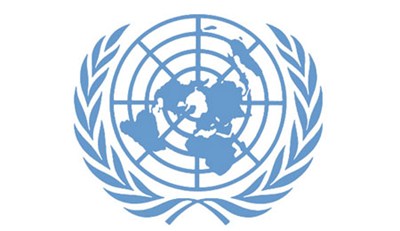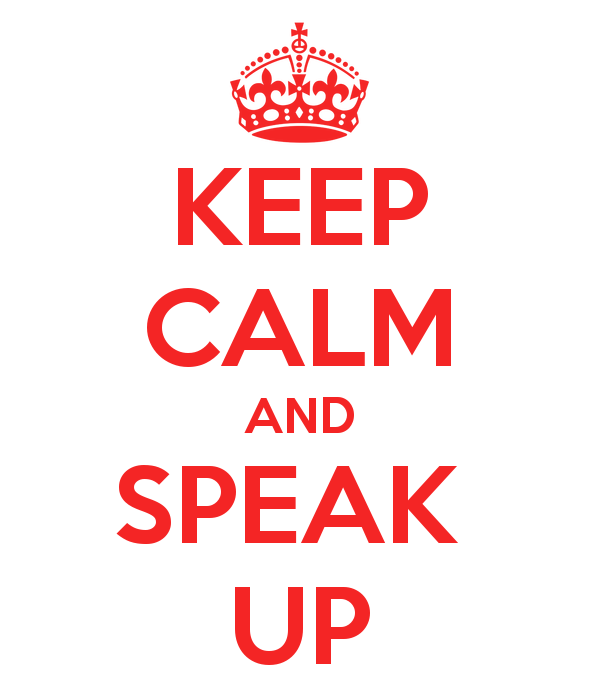No matter what business you are in, you encounter people with diminished mental capacities caused by dementia, a brain injury, even Schizophrenia. They may be job applicants, they may be applicants to volunteer, they may be attendees to a public event, they may have paid to be a part of a service you have offered, such as a class or a hackathon.
In thinking about customers and clients and public spaces, including online spaces, nonprofits, NGOs, charities, libraries and others need to consider how to balance the priorities of the program and the needs of other clients and customers with the rights of a person with diminished mental capacities who, just like any member of the public, has a right to attend any public events, speak with you in public, come into your lobby to make inquiries, apply to volunteer, apply for a job, comment on your blog, blog about your organization, etc. For me, the boundary is if and when the behavior of someone, for whatever reason, becomes disruptive or they violate the decorum or rules of onsite or online interactions – and that’s a boundary for EVERYONE, regardless of their mental capacities.
I’ve worked in and with nonprofits, in and with agencies focused on international humanitarian work and with people who want to work in these sectors for more than 30 years – I started when I was still at university. This kind of work regularly attracts people who say they want to be considered for work or funding, or want to participate in a program, but who are not capable of such and also have significantly diminished mental capacities.
It’s not always obvious during a first encounter, when the person attends an event and begins asking a question, or calls to set up an appointment, or writes an email asking for information about consulting fees, or even applies for a role: the person may be quite well-spoken, may have a university degree, may be well-read and may have a credible, professional background in a particular field – or seem to. But further conversations reveal the mental issues: a belief that they are freelancing for a major media outlet, a belief that they are in regular contact with heads of state, a belief that a legitimate, credible group has somehow endorsed the work this person wants to do (when, in fact, the group has NO formal affiliation with the person, and either has never heard of the person or actually wants to distance themselves from the person as much as possible), a belief that a certificate of appreciation for attending an event is actually a major, prestigious award, a belief that those they encounter are working for a secret government agency that spies on them, and on and on.
I’ve encountered such people regularly in my work, people who believe they are journalists and asking for interviews with senior staff or high-profile politicians or with celebrities participating in our organization. Or claiming to be experienced humanitarian workers. Or asserting that they have formal connections with a variety of high-profile organizations and government officials. Or claiming that they have a nonprofit or NGO, or are starting such. Or claiming to be the spokesperson for a particular indigenous community or minority group. Or just walking into a conference and then into a workshop and asking questions and joining break-out groups, despite not being registered and having no formal affiliation with any of the subject matter of the conference or workshop. When I realize that the person isn’t who they believe they are or isn’t supposed to be at the conference or event, myself or others are often deeply engaged in a conversation with them – or they are so deeply ingrained in the moment that it might cause a disruption at the event to ask them to leave.
I once attended a conference as the keynote speaker and only after arriving at the venue did I realize, along with other speakers, that the organizer herself was someone of diminished capacity who had put herself deeply into debt renting space and paying for accommodations and travel for speakers and presenters and actually had NO formal affiliation with the organization she had claimed was sponsoring the event. It was a painful experience for everyone, and I learned the importance of always confirming that someone who makes any offer to me regarding a speaking engagement, consultation or interview really is with the agency they claim to be with.
Another time, I accepted payment for career consulting from someone who, according to her résumé and LinkedIn profile, had an excellent academic background and rich professional history that would make her a good candidate for humanitarian work. After several email exchanges, she said that the CIA regularly tracks her communications and she feared I was working for the agency, among other theories. A Google search of old web sites and newspaper articles showed that she really did have the professional background she had claimed, but at some point, her career had just stopped, during a time when she claimed to have gone back to university for another degree, and there were no more listings for her after a certain date on the Internet. I ended up returning her money, wishing her well, saying that I thought it was best we no longer have communications and blocking her email address so that I no longer received communications from her.
More recently, I volunteered with a local citizens’ advisory group that helps local artistic groups and artists with publicity, grant writing and networking. I encountered an elderly woman who wanted advice on proposal writing and had signed up to get assistance via this group. As we talked, I slowly realized she was someone of diminished capacity: she said she wanted to start a nonprofit, but she was vague on what its mission would be, she had no letters of endorsement from those she claimed her nonprofit would help, she has no board of directors, she couldn’t verbalize any concrete goals or steps and she seemed confused at my questions. She continually talked about how she needed office space so she could do her work – work she couldn’t really describe. She also had some unfortunate, quite racist things to say about the people she wanted to help. After some checking later with others, I found out that, indeed, decades ago, she really did have an extensive, international arts background. She definitely knows about nonprofits in general, and how to find the events this advisory group puts on. But her ideas for her nonprofit were unrealistic: she believes there’s a magical grant that will give her office space and office equipment, even though she still isn’t sure exactly what it is her nonprofit will do, and believes artists will become a part of her program, even though she doesn’t know any personally.
I am not a doctor, a counselor, a therapist, a psychologist or a psychiatrist, and I do not want to imply I am in any way. I do know that there are several health factors that can affect a person’s already-diminished mental and emotional capacity, such as age, fatigue and hearing and vision loss. There are other factors as well, such as a particularly traumatic event, grief or depression. I also know that people with mental illness can come from any racial group, any cultural tradition, any economic level or any level of intellectual capacity (they can have legitimate PhDs). While I am not in any business to help people with emotional or mental challenges, I do know that I am going to encounter people facing such challenges in my work – and during activities on my personal time as well – and I need to be prepared for such.
When I have encountered these situations onsite, my approach has been to remember that this person has a right to attend public events, speak with me in public, ask for a meeting, apply to volunteer, etc. (unless it’s a paid conference or ticketed event- just like anyone who didn’t pay to be there, they will be asked to leave and escorted out if necessary). So long as he or she isn’t profoundly disruptive, doesn’t become insulting and won’t monopolize my time or the time of others at the public event or in the public space, I’ll interact with that person, just as I would with anyone. I have ended up involving people with diminished mental capacities as online volunteers: while I knew they had challenges, per things they said on their application and some of our email interactions, I could also see their capabilities, and I was able to find tasks they could do as volunteers – they were never disruptive and one such person in particular was one of the highlights of my early days working with online volunteers.
In situations dealing with people I suspect have some diminished capacities, I sometimes need to be more explicit about setting and sticking to strict boundaries, such as the time I have available for the meeting, or noting that it’s time for someone else to ask a question and that our workshop does not allow anyone to monopolize workshop discussions. I work to be clear and consistent in what I am saying, staying respectful even as I am being blunt: “I appreciate your goals, however, I have spent 20 minutes speaking with you and now this conversation will need to end. I will walk with you to the front door and then you will have to leave, so that I may do the work I have scheduled for today.” Or “Thank you for your comments, but I’m going to have to stop you now, because other people in this workshop need to be able to speak.” I do not encourage any medical or mental health treatment to the person, but I may ask if there is a family member or someone else I can call to transport the person elsewhere, especially if that person becomes tearful or distressed or seems incapable of removing themselves from the premises. If the person has paid money to attend an event or for consultation time, or has made a financial donation, I do all I can to refund that money as immediately as possible.
If the person does become disruptive, such as refusing to stop talking during a workshop, or is trespassing, I will be more blunt. This happened at a conference in Portland, by a person who had wandered into a conference workshop I was leading. I told the person, in front of all the other workshop attendees, as the person rambled on and on, “You will have to stop talking now and you will need to leave. I will call security immediately if you do not.” The person did leave immediately.
I also make sure co-workers are aware of what is happening and make sure everything that happens is documented in some way. Sometimes, this is just an email to another organizer detailing what happened, what action I took, and suggestions for avoidance and, if that doesn’t work, for future encounters. I make sure all staff know what to do if this person attempts to purchase an event ticket, make a donation, register for an event, etc.
Psychology Today has an excellent article, “Communicating with People with Mental Illness: The Public’s Guide” that has a detailed list of strategies for communicating effectively with people with mental illness. The article was posted Oct 19, 2010. The suggestions include:
- Be respectful to the person. When someone feels respected and heard, they are more likely to return respect and consider what you have to say.
- If they are experiencing events like hallucinations, be aware that the hallucinations or the delusions they experience are their reality. You will not be able to talk them out of their reality. They experience the hallucinations or delusional thoughts as real and are motivated by them. Communicate that you understand that they experience those events. Do not pretend that your experience them.
- Some people with paranoia may be frightened, so be aware that they may need more body space than you.
- Do not assume that they are not smart and will believe anything you tell them.
- Mental illness has nothing to do with the person’s intelligence level. Do not lie to them, as it will usually break any rapport you might want to establish.
- Try to limit your interventions to relatively short periods of time, but realize that taking time to try to communicate effectively with the person may save you a lot of time in the long run and help someone in the process.
- Listen to the person and try to understand what he/she is communicating. Often, if you do not turn off your communicating skills, you will be able to understand. Find out what reality-based needs you can meet.
- If needed, set limits with the person as you would others. For example, “I only have five minutes to talk to you” or “If you scream, I will not be able to talk to you.”
When you realize you are dealing with someone online with diminished capacities, it can be much more difficult: being online may constitute a substantial part of that person’s time every day, and they may rely on online activities to feel included or important, to make their imaginary nonprofit seem legitimate, etc. It’s much easier for any person to appear credible online. Your program should know what to do if they start to suspect they are having such an interaction:
- Tell your staff that they need to let their supervisor know if they suspect someone they are interacting with online, or someone writing about your organization online, might have mental or emotional challenges, and let staff know the rest of these guidelines (and make sure they understand them).
- Do NOT say in any public forum or on any social media channel, or to the person, ever, that you think the person is mentally ill, emotionally challenged, etc.
- If interactions with any person online are disruptive to your business, or you think at any point someone from law enforcement, a judicial body or the person’s family may need to see these exchanges, or you are going to have to cut off communications with this person because of their behavior, screen capture all communications that illustrate how the person is disruptive and save these for future reference.
- If you are worried in any way about this person escalating their communications and actions to the point of being disruptive or dangerous, have a staff member search online to see if this person has caused issues for other organizations. Searching for the person’s name on Google and Duck Duck Go, as well as on YouTube, will probably be enough to reveal such, but you may need to add words to that search – just the word complaint or words that the person uses frequently in their online interactions with you can lead to the specific information you need to see that you are not the first program targeted. Screen capture any examples you find of this person behaving this way with others (and don’t be surprised to find that you aren’t the first target of this person’s fascination or ire). You may want to discreetly reach out to those earlier targeted organizations and individuals, to see how they handled being targeted by this person and if the situation died down, was resolved, etc.
- It may be best to not respond at all to blogs they write about your program, or what they write on their own social media channels about your program – but you need to screen capture those references to your organization and your staff for future reference.
- It may be best to stop engaging with the person – not to reply to their emails, not to reply to their online comments, etc. You need to save those communications for future reference, if needed. You may want to simply stop replying without explanation or you may want to say, “We appreciate the time you have taken to share your viewpoints about our work. We have responded as much as we think is needed and, In the interest of staying focused on our work, we are going to stop replying to your emails.”
- It may be best to block the person from your online community, not publish the person’s comments on your blog, remove comments from the person on your Facebook page, etc. You may need to go even further and block the person entirely on social media channels so that they cannot see your posts – but know that they can simple create a new account and view your public information from that new account. Know that blocking someone entirely might escalate the person’s hostilities or anger, as they will be able to see that you have blocked them.
- You may need to let your entire staff and all of your volunteers know about the situation, if they are seeing this person’s posts on social media, on a blog the person owns, on other organization’s blogs, etc. Be very careful in your communications with staff regarding your choice of words to describe the person. An example of how you could communicate this situation in a meeting, “Some of you have noticed that there is a person producing videos about our organization where he says that our Executive Director is engaged in illegal behavior. We are aware of these posts. We ask you to please never interact with this person online, never comment on anything this person says online, and please do not to have any conversations with anyone about this person online. If you see this person doing something online that relates to our organization, please notify such-and-such. If you are worried in any way about this situation, please notify such-and-such.”
- Once interactions get to the point of screen captures, muting or blocking, notify at least one board member and, if it’s not that person, your nonprofit’s legal counsel, about what is happening. The likelihood of this escalating to legal action is minuscule, but you do need to cover your bases.
Hootsuite has an excellent blog about dealing with online “trolls” – people who “deliberately provoke others online. By saying inflammatory and offensive things. They live to make people upset and angry.” I think that most such people are dealing with diminished mental and emotional capacities. One section of the blog asks, “Troll or upset customer” and notes that it can be hard to tell, as “Both might appear irked, perhaps even furious or enraged.” The blog’s advice:
- Stay calm. Look at the substance of their words. That’s usually the tell-tale.
- Listen and think about their motivation. Do they appear frustrated, stating a seemingly authentic claim about your business, product or service?
- Or… do they sound outraged, seething and trying to incite rage in your brand or in other users?If so, you’ve got yourself a live, social media troll—an internet misfit, in the digital flesh.
- For the un-delighted customer, listen to them. They want to be heard. If you address and resolve their issue, they’ll be satisfied and those unhappy messages will cease.
- But not the online troll. They won’t stop until they’re forced out or get bored.
- Trolls aren’t looking for resolution. They want to engage in battle, one that nobody can win.
To be clear, while I do think trolls are people with diminished mental and intellectual capacities, I don’t think all people with diminished mental or intellectual capacities are trolls.
The situations I have had talking with people with diminished mental capacities have not turned dangerous or litigious for me (yet), but I always have that potential in mind, however unlikely. I am also thinking about the safety of myself and others at the facility or within the organization where I am working. The importance of having other people around during onsite conversations and encounters, and having screen captures of online encounters that your board, other staff or legal advisors could reference if needed, cannot be stressed enough.
If I see the person somewhat regularly, know them by name, etc., and I perceive a progression of behaviors that I believe could lead to violence, such as yelling or crying, I will contact a family member or friend the person has identified to me to come help in the situation. I would call the police if the situation had the potential to become dangerous for anyone, including the person I’m talking with.
One thing I do NOT do is “kick the can down the road” – as in suggest to the person that the person go to another nonprofit or consultant because it is my hope that this will take the person’s attention off of me. I may recommend another organization if I think the experience might help the person understand that, for instance, they will not be able to get funding for a nonprofit they are dreaming of building, or that they are not going to get support to go to another country to do work they’ve always dreamed of.
If your nonprofit has a mission to work with people with diminished mental capacities, such as people who are experiencing dementia, I have a suggestion for a funding source: offer short courses for businesses, government offices and nonprofits in recognizing customers, clients, volunteers and staff who may have such issues. We need this training!
Also see:
If you have benefited from this blog or other parts of my web site and would like to support the time that went into researching information, developing material, preparing articles, updating pages, etc. (I receive no funding for this work), here is how you can help.











